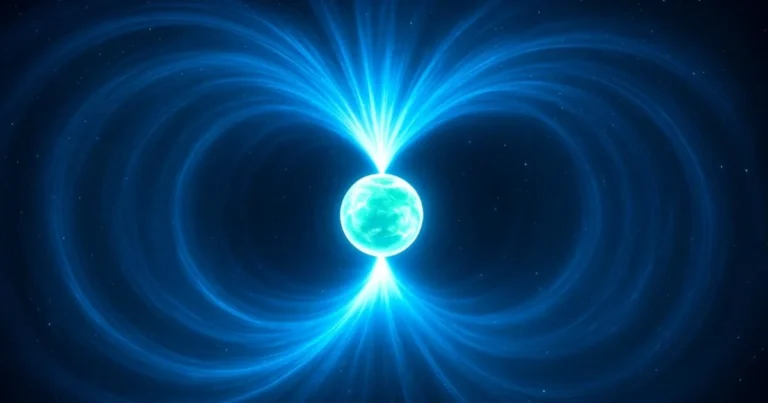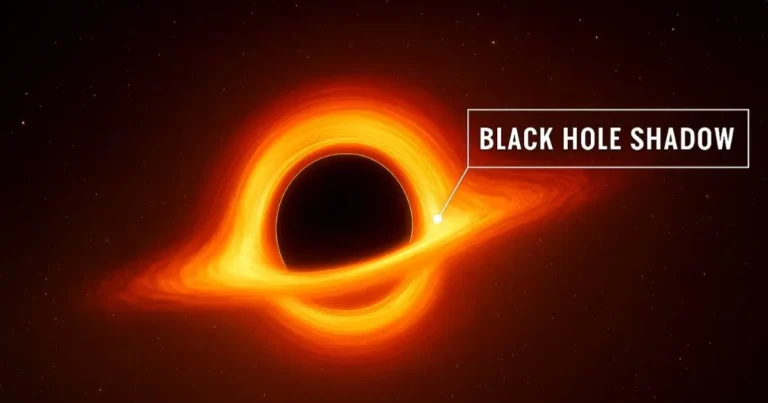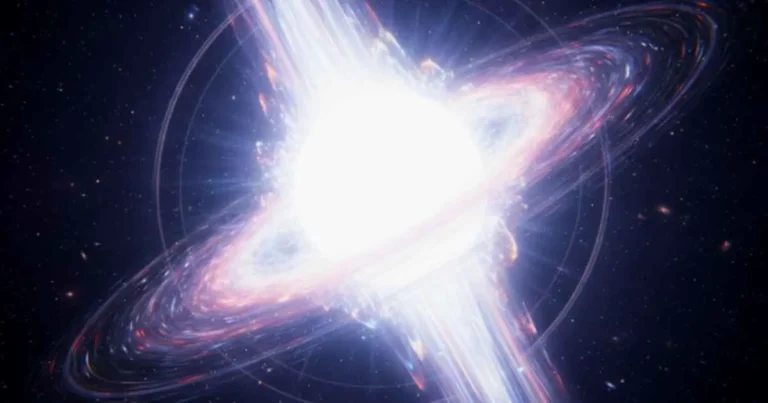Intergalactic Magnetic Fields: 7 Powerful Secrets Hidden in the Cosmic Web

Tags:
- cosmic magnetic fields
- cosmic web
- Faraday Rotation
- IGMFs
- intergalactic magnetic fields
- Stellar Illusion
When we look up at the night sky, we can see the stars—even the galaxies if the weather is clear enough—and there we see the huge emptiness between them. But did you know that the emptiness is not completely empty. Confusing, right? Let’s clarify this a little bit more. Intergalactic Magnetic Fields (also known as IGMFs) are unseen, weak, and enigmatic. These are what exist between the vast galaxies, influencing the trajectory of cosmic rays, and who knows—maybe even the large-scale structure of the universe itself.
By reading the blogs of Stellar Illusion, you will uncover those obscured facts of the universe that tend to go underreported among conventional astronomy buffs.
What Are Intergalactic Magnetic Fields (IGMFs)?
While you may be aware of Earth’s magnetic field or the intense magnetic fields that exist around planets and stars, magnetic fields between galaxies are extremely weaker but much broader. These fields are generally expressed in nanogauss (nG) units—billions of times weaker than Earth’s magnetic field. Recent research also indicates that these magnetic fields may have strengths of about 1 to 10 nanogauss in cosmic filaments. Although it may sound infinitesimal, over millions of light-years, even such feeble fields have powerful impacts on the behavior of cosmic matter.
How Are Intergalactic Magnetic Fields Measured?
Unlike radio waves or visible light, magnetic fields can’t be observed directly. Astronomers employ ingenious indirect ways to identify and quantify them:
Faraday Rotation
When light, particularly radio waves, travels through a magnetic field, it becomes polarized. This process, known as Faraday Rotation, allows scientists to estimate the strength and direction of the magnetic field in intergalactic space.
Gamma-Ray Shadows
Distant galaxies’ high-energy gamma rays (such as blazars) occasionally vanish or arrive slightly modified due to their encounter with intergalactic magnetic fields. By analyzing these interruptions, astronomers are able to estimate how powerful or puny the fields are.
Radio Observations
Sophisticated radio telescopes such as LOFAR (Low Frequency Array) and the future SKA (Square Kilometre Array) are bringing sharper views of these magnetic structures to cosmic scales.
Where Do Intergalactic Magnetic Fields Originate?
Now you might be wondering how these fields originate since there is still a cosmic enigma around them, but scientists broadly have two possible theories.
Primordial Origins
One theory states that magnetic fields have always existed since the dawn of the universe, perhaps forming during cosmic inflation or phase transitions in the aftermath of the Big Bang. If so, they are actually fossil remnants of the early universe. Aren’t they?
Galactic Outflows
Another theory states that super explosions from galaxies—such as supernovae or active galactic nuclei (AGN)—shot material into the intergalactic medium, pulling magnetic fields along with them into intergalactic space.
It may be possible that both these sources helped in creating what we observe today—both ancient remnants and modern galactic activity.
Why Are Intergalactic Magnetic Fields Important?
Another question that may be clouding your mind is: why are these magnetic fields so important? The answer to this is simple—though weak, these fields also play an important role in the evolution of the cosmos. How’s that? Let’s find out:
Contouring Galaxy Formation
Magnetic fields also have a noticeable effect on the motion of charged particles, shaping the formation and evolution of galaxies and galaxy clusters.
Steering Cosmic Rays
Cosmic rays with high energy are not only deflected but also redirected by intergalactic magnetic fields as they move through the universe, altering how we observe these high-energy particles on Earth.
Exploring the Early Universe
Knowledge about these IGMFs has even helped our scientists unravel other mysteries in cosmology, such as the source of cosmic structures at large scales and enigmas related to dark matter.
Isn’t it fascinating to know that something so intangible can have such a deep influence on the grand stage of the universe?
Related Read:
If you’re intrigued by how invisible forces shape the universe, you’ll love our article on Unlocking the Secrets of Alien Astroengineering in 2025. Discover how advanced civilizations might harness cosmic structures—like stars and even galaxies—to reshape the universe itself. It’s a perfect companion to understanding the hidden architects of the cosmos.
New Discoveries and Future Expeditions
With ongoing studies, we have just started to learn more about these magnetic mysteries. Recent observations of radio bridges between clusters of galaxies have revealed direct evidence of intergalactic magnetic fields spanning millions of light-years.
The future SKA—also known as Square Kilometre Array—contains our prospect of transforming our understanding through its ability to chart magnetic fields over great cosmic distances. Additionally, the gamma-ray telescopes of the next generation will enhance our ability to detect these faint cosmic signatures.
Conclusion: The Invisible Architects of the Universe
Although imperceptible to our vision, intergalactic magnetic fields are more like silent sculptures of the cosmic web, shaping the motion of matter, the evolution of galaxies, and the very evolution of the universe. With advancing technology, we now stand at the threshold of discovering more of this unseen history—one that will perhaps rewrite how we envision the cosmos.
For more of these interesting and lesser-known subjects, continue to explore Stellar Illusion, where we unite science and mysteries, simplifying complicated cosmic events into an effortless learning experience along with something exciting to discover.
Comments
Please log in to leave a comment.
Related Posts

Magnetar: The Universe’s Most Extreme Magnetic Monster
Magnetars are ultra-magnetic neutron stars, cosmic beasts that emit bursts of radiation so powerful they can shake entire galaxies. Learn how they form, what makes them unique, and why their mystery continues to fascinate astronomers.

What Is a Black Hole Shadow? The Ultimate Glimpse into the Abyss
If you could stare into the heart of a galaxy, past the light, past the stars, and into pure darkness, what would you actually see? When astronomers talk about the black hole shadow, they’re referring to one of the most mind-bending sights in the universe, the silhouette of the unseeable, the faint outline of where […]

White Holes: The Universe’s Reverse Gear
If we were to rank the theories that have changed human history forever, the General Theory of Relativity would be at the top. The results it reveals are beyond human understanding. They show that the cosmos is filled with perplexing phenomena, some of which are purely hypothetical yet mathematically elegant. One such phenomenon is the […]